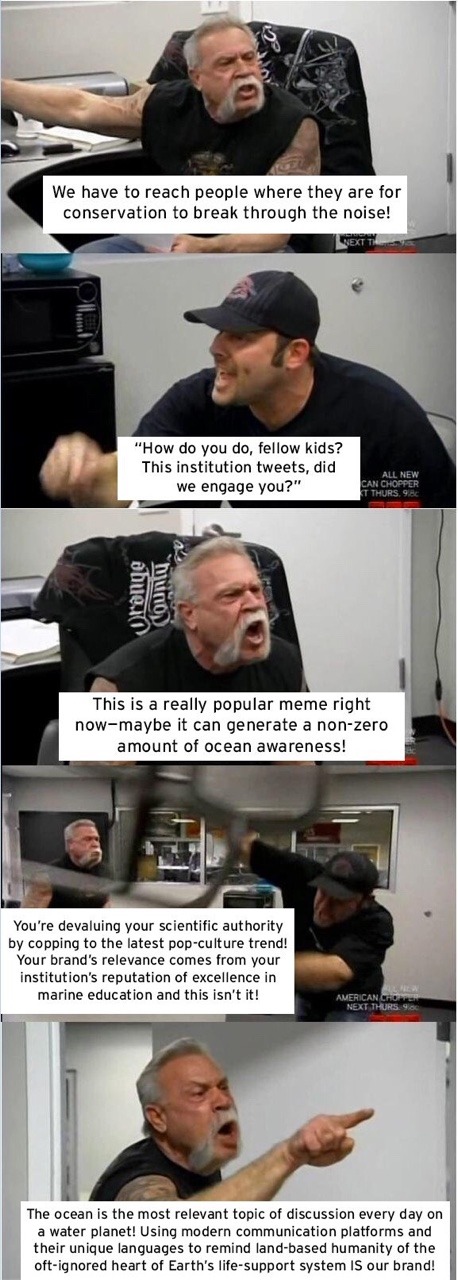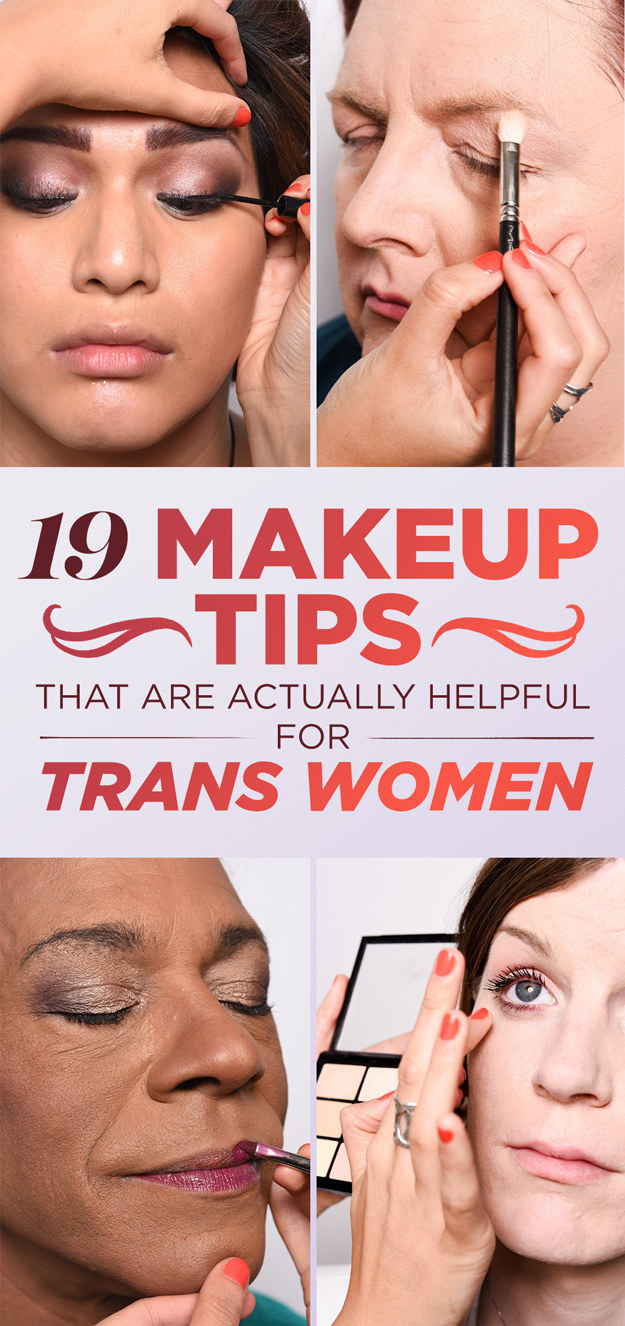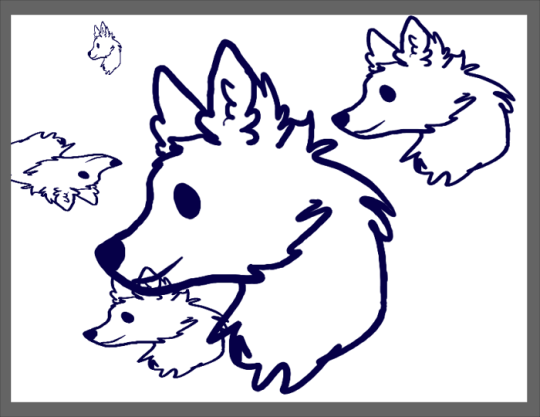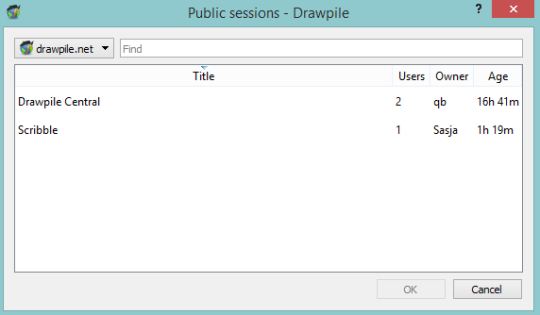Text
64K notes
·
View notes
Video
a thing about chords!
41K notes
·
View notes
Photo


254K notes
·
View notes
Text
There are no stars, no sun in the sky. Fire invisibly produces heat. Light is a very rare element which can be found buried in the earth. The ancient art of extraction is perilous and almost lost. You are one of the last of the lightminers.
3K notes
·
View notes
Text
i’ve finally found my drawing style

371K notes
·
View notes
Video
IM THE WORST ART TEACHER DONT WATCH THIS
632K notes
·
View notes
Photo

As a college student, currently really hungry with nothing to eat, I understand how hard it can be to get food. Sometimes you really just don’t have the money to eat and when you do, you waste it all on fast food instead of stocking up on cheap things because you’re so tired of Ramen Noodes and canned food you could barf. So, I’ve composed a list of recipes and resources that will fit a college kid’s budget and appetite. Don’t go hungry! <3
Ramen Noodle Recipes:
Ramen Noodle Stir Fry
Sirloin-Snap Pea Stir Fry
Chicken Noodle Soup
Chili Cheese Ramen
Egg Drop Ramen
Spinach and Ramen
Ramen Spaghetti
Ramen Alfredo
Cheesy Ramen Noodles
Mug Meals:
Cheesy Eggs Mug
Cheese and Broccoli Mug
Mac and Cheese in a Mug
Meatloaf in a Mug
Nutella Mug Cake
Cheesecake Mug
Coffee Cup Quiche
Coffee Cup Chilaquiles
Mug Egg Scramble
Microwave Recipes:
Potato Chips
Corn on the cob
Scalloped Potatoes
White Rice
Fried Rice
Baked Potato
Chicken Casserole
Garlic Chicken
Chicken Soup Casserole
Caramelized Onion Baked Potato
Soft Chicken Tacos
Pancakes
Recipe Generators
My Fridge Food
Fire House Chef
Dinner in 15 Minutes
Advanced recipe Generator
Cuisine
Recipe Matcher
Super Cook
Recipe Puppy
Cook Thing
Recipes by Ingredient
Recipe Key
Not Beans Again
Ideas 4 Recipes
Big Oven
Other Resources
Actual College Student Cookbook
Restaurant Coupons [1] [2] [3] [4]
Free Birthday food [1] [2]
405K notes
·
View notes
Text
Transmasculine Presentation Resources Masterpost
(For a transfem version of this post, click here)
Some of this could also be useful for other masc people and transneutral people who were cafab as well! And of course feel free to add to this post if you have more good links and/or info to share.
& the obligatory disclaimer: Transmasculine people can present however they want. There’s absolutely no obligation to do the stuff listed here.
Chest:
Binding is Not Safe
Binding 101
More safety info
“Is it Normal?” Binder Edition
Getting a binder without your parents knowing
How to Wash your Binder
Rashes and skin irritation from binding
Coping with chest dysphoria without binding
Swimming
Face:
Mascunilizing Makeup
Making a Beard with Makeup Video
Fake Beard with Real Hair Video
How To Apply A Fake Beard Video
Hair:
Body hair
Long hair
Androgynous hair
Getting Short Hair
Clothes:
How To Look Older as a Baby-Faced Guy
Discrete
Thrift Stores
Dressing to Flatter Your Body Type
Suits & Ties for Beginners
Tomboyx Underwear
Where to Get Men’s Clothes that Fit
Voice:
Voice Deepening for Transgender People
Voice Analyzer App
How to make your voice Deeper Video
Trans Voice Subreddit
Free Trans Voice Resources
Packing / STP:
Pee standing up without a STP
DIY fabric packer
How to Make a Realistic Sock Packer Video
How to make a Packer
How to Pack with a Sock
How to make your own Harness
Packing with an extra small Mr Limpy
Packing and Packers 101
Packers, STPs, and Dildos
Packing Info Post
Tips for Using an STP
A Guide to Stand to Pee (STP) Devices
Packing Wiki
WikiHow for Packing
Guide to Packers
Reviews
General passing tips:
How To Walk Like A Badass
Transmasculine Passing Tips
Passing Tips
WikiHow Passing Guide
How To Pass As Masculine For Trans Men
Tips For Passing Video
The Art of Transliness Guide to Being Read as Male
7K notes
·
View notes
Photo

Bookmarking now and forever (x)
196K notes
·
View notes
Photo

Have you ever wanted to draw with your friend(s) online but found that iscribble and/or flockdraw just didn’t do what you needed them to? Did you miss features such as pen pressure and the undo button? Did you need more than three layers?
WELL I’VE GOT SOME GOOD NEWS
There’s this one tool that does SO MUCH MORE than either of those websites ever did.
It’s called drawpile and it is fantastic.
Sure, flockmod actually has an undo feature, but when used it deletes everyone’s progress from a certain amount of time which would cause some issues!
But drawpile has an undo specified to your actions and only yours. So if you’re drawing with anyone else, and you control z the hell outta your drawing, your friend’s art will be completely unaffected! This is the only shared drawing program I have seen that can do this.
And it’s 100% free.
BUT WAIT THERE’S MORE.
Drawpile supports PEN PRESSURE. Whether it’s for opacity, sizing, or hardness, or a combination of any of those, your tablet pens will work!

You can play around with your strokes to get them wherever you need them to be, much like a normal, individual art program!
And on top of that, you can have way more than just three layers!

You can have so many layers I literally don’t have the patience to try to find the limit. You can also rename them, clear them, make them invisible to you, and delete them as you wish!
ANNND it also has layer settings like normal drawing programs!

It doesn’t have all of the ones some individual programs do, but considering this is completely free and to be used by multiple people at once, this is incredible!
Not to mention you can lock a layer so only you can draw on it!

This is especially helpful to make sure no one accidentally does anything on your layer or any other layer that shouldn’t be touched!
Drawpile also has a paint bucket tool and the ability to open existing pictures in it so you can color pick from things for your art!

You can also mirror the canvas as you work and rotate it any way you need to in order to get your strokes just right!

You can also select certain pieces and rotate/transform/scale/move them as desired, which I never saw available in other group draws.

All you have to do is download the program from the site!
You also have a choice in what sort of session to make, and don’t have to make an account for it!
When you host a session for others to join, you can lock it with a password and give it out to only your friends. If you want it to be public, don’t set a password and check “announce at drawpile.net”.

Your session will then appear in a list for anybody to join!

There aren’t many people on at a time yet it seems, but honestly if you ever use iscribble or flockdraw, I HIGHLY suggest switching to this program. There aren’t any premium features either, from what I’ve seen. Unlike the other aforementioned sites, you don’t have to be a user for a certain amount of time to unlock different privileges.
I’m sure there are other features I haven’t mentioned either, but their site explains far better than I!
Download it here!
#links#reflab#reference lab#group drawing#drawing#art#digital art#art resource#drawing resource#drawing resources
58K notes
·
View notes
Text
reading advice (for writers)
you know those posts that are like, “remember when we used to read books and now we all have no attention span because of the internet.” then there’s the very contrived advice that’s like, “if you want to be a writer you have to read”??
well i think they’re completely true but they also really suck, and we of the youngish adult writers of 2018 have it pretty hard, especially those of us in fandom who enjoy reading fanfic more than original fic because it’s mostly tagged properly and possesses the emotional catharsis we’re looking for, pretty much guaranteed.
that said, i think it’s really important – whether you write fanfic, ofic, or both – to read traditionally published work, in part because it can help better inform your fanfic, but also because it will help develop your writing overall. and if you’re interested in ofic, it’s pretty much a necessity to read.
so, i just graduated from an MFA program in creative writing, and contrary to popular opinion, the MFA does not actually teach you how to write. it gives you space to write, and mostly, it teaches you how to read as a writer.
so here is everything i’ve learned about reading as a writer over the past two years:
you do not have to read anything you don’t want to read
part of the problem with “read everything you can!” advice is that there is a lot of stuff out there, and a ton of it doesn’t jive with your interests. moreover, there’s a kind of pressure to read the Classics just to say you’ve read them when in fact a lot of them are boring, irrelevant, and dare i say overrated. so here is me giving you permission: you don’t have to pick up Hemingway or Faulkner or whoever else to be a good writer. life is too short to force yourself to read dead white dudes.
if a book doesn’t grab you by the first 10%, put it down
this is what has helped me more than anything else as a reader, because i found i would commit myself to a boring book and then never want to read it, so i would stop reading for months at a time. so, when you pick out a book, go to the last page and check the number. promise yourself you’ll read 10% of the book. 400 pages? read to page 40 and ask yourself, “do i really want to turn the page? if i put this book down, would i want to pick it back up again later?” if the answer is no, return it to the library or wherever you got it. try the next book in your pile. your TBR list is long; be merciless.
but if you want to make it look like you read the book…
commit to 25%. then go to the wikipedia article, read the plot summary, and fast forward to the last 10-15 pages. bam. you’ve more or less read the book. bonus points if you watch the movie, too. so if you’re really committed to reading Ulysses or whatever but you don’t want to slog through it, you can digest enough to be able to hold a conversation about it in a few hours and move on with your life. you can even pretend you enjoyed it and found it a formative reading experience that helped shape your understanding of the work of fiction, really, absolutely groundbreaking, etc etc. this is especially helpful if you find yourself anywhere in the literary sphere because other writers will expect you to be familiar with the canon.
read selfishly and take tools from everything you read
when you read anything, even the stuff you don’t like, ask yourself, “what tools can i take for my own writing?” let’s say you really love the plot structure – write it down somewhere so you remember to try it out for your own story. if you love the lyricism of the sentences, find a few sentences you really like and jot them down by hand, inspect what about them makes you love them so much. steal aspects of characters you admire, pacing, conflict, stakes. steal as much as you can without stealing the words themselves. you can even use this for things you don’t like by rephrasing the question: “what is it about this story i would like to avoid in my own work?” pivot every single thing you read to be about you and your writing. take notes. mark up and highlight your book if you have to. reading as a writer is not a passive activity but an active one. you’re not being entertained, you’re learning. so let published works teach you.
carve time out of your day to read
at 7pm every day, i put my phone down and pick up an actual physical book. this is my personal preference – i have no beef at all with ebooks, but honestly, i get so tired of staring at lit screens all day, and paper books without the distraction of my phone is such a nostalgic feeling for me, back when i was 14 and the library was my second home and if someone wanted my attention they had to call me on a landline. if you had the same upbringing, dedicating some time to read a physical book will do you wonders. if ebooks are your thing, it’s still important to schedule reading time for yourself, not as an obligation to uphold, but as something to do that’s good for you and that you enjoy.
write letters to your favorite authors!!
seriously. if you love a book, let the author know. they will not be annoyed or upset. they will be thrilled. it’s a good way to network with other writers, and it’s a great practice of literary citizenship.
when someone recommends a book to you, ask why
this is something i’ve only recently learned to do, as someone who gets book recommendations pretty much constantly. if the person knows you decently, i don’t think it’s out of line to ask, “what would i specifically like about this?” because then that will tell if you if the person is only recommending it because they like it, not because they think you’ll like it. if the person knows your writing, it’s fair to ask, “how is this book in conversation with my work?” so you have a head start in the kinds of tools you’ll want to take from it.
follow your aesthetic instincts
as a writer, honing your aesthetic will always be one of your highest aims, which means constantly seeking out writers whose aesthetics you admire and analyzing what it is you admire about it. “aesthetic” is kind of a vague term, but it refers to your overall vibe – the things you write about and why you write about them. my aesthetic is more or less “midwestern class warfare meets sexual identity crises with a lot of dark humor,” so i tend to look for other writers who share facets of that aesthetic and i inspect what’s working for them, where they publish, what their influences are, etc. i try to read both within my aesthetic but also far outside of it too. for example, i love historical fiction but i know i’ll never, ever write it. but i appreciate the aesthetic, and i can take tools from it like dedication to detail, internal conflicts, etc.
read short fiction (please)
this is my personal plea. short stories are a great way to find authors whose work is in conversation with yours, so that you can then go check out their novels with a good idea already of what you like about them. short stories are all over the internet via literary and genre mags. they’re a much smaller commitment than novels and tend to have just as much emotional impact (if done well) as novels. more importantly you’ll always have recs for your friends, and it’s a lot easier getting someone to read a 6k story you enjoyed than a 60k novel.
resources
don’t have time to read but like to listen? try the new yorker fiction and writers’ voice podcasts
like marking up books but don’t want to buy them new? check out thriftbooks (my favorite site on the internet – the link here will get you 15% off!)
finished a book you like but don’t know what to read next? try what should i read next
want to stay apprised of the goings on in the modern literary community? subscribe to the lithub newsletter and arts & letters daily, two newsletters i’ve been subscribed to for years
as always i’m glad to answer any questions! happy reading!
writing advice tag
5K notes
·
View notes
Text
What not to write in fantasy.
I’ve seen some posts going around on what not to write in fantasy, many of which amount to:
Don’t write evil kings.
Don’t write people who are evil for the sake of evil.
Don’t write bullies.
Don’t write villains at all actually.
Don’t write mentors.
Don’t let your characters learn how to do hard things on their own though.
Don’t write people on adventures.
Don’t write people fighting evil governments.
Don’t write any fantasy species ever written before.
Don’t write any fantasy trope ever written before.
Don’t write any fantasy plot ever written before.
Just… don’t fucking write fantasy I guess??
And this is such utter bullshit, my friends.
We do need more originality and diversity in fantasy, but we don’t need to remove everything that fantasy is and has been in the process.
(Especially, especially, when diversity is being included in traditionally cishet white male protagonist fantasy stories.)
Maybe the chosen one with special magic powers and a royal bloodline going on a quest with a group of friends to defeat the evil king has been done before with a white cis man a thousand times over, but how many times has a black trans woman got to go on that adventure?
Maybe elves and orcs have been written into the dust, but they still make great templates on which to tell stories with original twists, and there’s nothing about them that stops a good, emotional story from hitting you straight in the heart.
Maybe dragons have been done by every writer ever to write fantasy, but you know what? Dragons are fucking awesome, my dudes. Many readers are always gonna love them.
Maybe we have told the same fantasy stories over and over again, but every step you take away from the known template is a step you have to spend more and more exposition on before the reader will understand your original creation.
So don’t let anyone make you feel like that your (inclusive) fantasy story is too ‘traditional’ to be good. As long as you produce a well written story you’ve put your heart into, it’ll be a story many readers will love.
#reference lab#reflab#writing#writing reference#writing tips#writing help#writing advice#writing resources#characterization#resources#fantasy#fantasy writing
10K notes
·
View notes
Text
Treating mental illness in fantasy settings
CW: self harm mention
I recently received an ask that included the phrase “[it’s a] fantasy-type setting, so there isn’t really any medication for treatment [for mental illness].” This is absolutely one of my worst pet peeves when writing about mental illness.
By saying “there’s no treatment for mental illnesses” simply because of the setting, you miss a huge opportunity for imaginative and creative world-building.
Let’s look at a tangentially related example from one of my favorite authors.
Years ago, I remember reading one of @tamorapierce ‘s books (I forget exactly which book it was), and a single tiny detail really left a lasting impression on me.
The female main character was able to obtain an enchanted charm to prevent pregnancy.
Honestly, that blew my fucking mind. Despite being an avid reader of fantasy, I’d never seen magic used in that way. It seems like birth control is such a modern invention, but this charm was integrated so seamlessly into the world that it just felt right. It was such a clever, creative detail that in retrospect makes perfect sense.
So back to my point: if magic can recreate (or even surpass) the effects of modern medicine to treat physical problems, there’s no reason you can’t also creatively apply it to treat mental illnesses.
Does your setting have potions? Then you can make a potion of euthymia to treat depression.
Does your setting have enchanted objects? Then you can have a bracelet of grounding to ward off dissociation and flashbacks.
Does your setting have spells that can affect people’s minds? Then you can have a mood stabilizing spell to treat bipolar disorder.
Dungeons and Dragons already has spells and objects that let you see through things that aren’t actually there! That’d be really helpful to a character who has visual hallucinations.
Also, St. John’s Wort (which is a naturally growing herb) has been used as an antidepressant since medieval times. See my post about it here.
I collaborated with the Scriptshrink consultants to come up some more examples:
Hypnosis-like magic could help characters work through mental blocks in therapy, through unraveling the thought patterns that lead up to destructive loops, or dissecting the elements of a panic attack to sort of unpack it and make it more manageable. (Elizafaraday)
A spell or charm to see through the eyes of others could help with body dysmorphia and social anxiety, or that could give a visual or audio cue as to how others perceive the character (ex not even noticing-favorable-neutral-unfavorable) (Elizafaraday, Anon32)
Magic items like bracelets that can provide any sensory input desired when touched to allow different stims. (Anon32)
Magic spells or elixirs than can block stimuli when over stimulated. (Anon32)
A magic ring that could treat self-harm, trichotillomania, or excoriation disorder by making the wearer’s skin unbreakable and their hair impossible to pull out. Alternately, it could give the illusion that the wearer has already done that activity (including all the neurochemical stuff that implies), without actually having themselves come to harm. (Anon32)
If you decide to go with the idea that schizophrenia is caused by spirits / possession, there could be a spirit repelling potion or wards to prevent it. (barc0de)
I would also recommend that these treatments have some kind of drawback, so they don’t end up falling into the “perfect instant magical cure” trope.
Spells may wear off with time, or can only be cast by certain people. They may also have side effects if cast constantly (headaches, dizziness, etc.)
Potions can be expensive or require gathering certain rare ingredients. They could also have side effects.
Maybe the enchanted item is fragile, and could break if directly hit while its wearer is in combat (for maximum drama).
Also, feel free to hit up @scriptwitchcraft for ideas on potion crafting and stuff in a magical setting!
Disclaimer - The Shrink would like to emphasize that this is advice meant to apply to writing fantasy settings only. Do not apply this post to treat mental illness in real life.
#reference lab#reflab#writing#writing reference#writing tips#reblog#writing help#writing advice#writing resources#fantasy#medicine
4K notes
·
View notes
Text
External vs. Internal Character, Part 1: The Three Faces
There’s a Japanese saying that has a good bit of advice for writing fiction.
The first face, you show to the world. The second face, you show to close friends and your family. The third face, you never show anyone.
People have different sides to them, shaped not just by personality and background but by situation and surroundings– and strong character writing emulates that by showing the difference between how people act around different company, (and then takes it a step further by showing that they don’t always act how they think, but that’s for Part 2). This doesn’t mean that your characters are two-faced or terrible people; it’s just a reality of life that can help make the person in a story more believable and more human.
The first face, you show the world.
While some characters may be more comfortable being their “true selves” in public or around strangers, they should still have some degree of a “public personality”. For example, someone who appreciates physical contact may commonly touch their friends, but they wouldn’t behave the exact same way toward a stranger. They may still retain the ‘touchy’ part of them, but it’s much more likely to come out with brief and less intimate touches, like a tap on the shoulder as opposed to a hug.
This “first face” can occasionally be heard as referring to a purposefully crafted personality that the character shows to the public, like a teen actor who has to maintain a squeaky-clean image to continue getting roles, but situations like that are more like special cases. That’s more of a character “mask” than just a general personality guard. A true first face is still an accurate and genuine part of the character, just adjusted for strangers.
The second face, you show to close friends and your family.
This is typically what’s thought of as basic character personality. A shy character would likely open up when surrounded by those they know and trust, showing their “true” silly side or any other trait that’s inhibited by their “first face”. It’s important to remember that the traits from the first face don’t go away because the first face isn’t a lie or mask, but traits can get more or less intense as you move between faces.
Once again, there can be special cases where a certain “close” person, usually family, doesn’t get to see the true second face because the character doesn’t allow it. Those situations are usually when the character is trying to hide something or protect themselves, but don’t count as a second face in accordance with the saying. A true second face is accurate to who the character is in their comfort zone.
The third face, you never show anyone.
Deeper than basic character personality is uninhibited personality. The third face doesn’t have to reveal anything horrifying– it can often be as simple as a character who’s naturally on the rude side choosing not to make a snappy remark. The natural rudeness is the third face: the raw character and traits that are liberated from direct outside influence. Because outside influence is everywhere, even around friends, the only person who sees a true third face is the character themselves.
In the case of secrets that will eventually be revealed, they can be kind of be considered part of the third face. However, they’re very much separate from it because they can move into a more public domain unlike the “uninhibited personality”, and are better considered as part of an overall ‘internal self’ that affects the three faces. Good secret revealing in stories has build-up and reasoning for the reveal (link embedded) and one way to show that build-up is similar to a ‘hole’ in the third face. The character may not want to show something, but it slowly leaks through anyway.
That “leak” can take a number of forms that depend heavily on character personality and context of the story:
A character with a normally cheerful second face may be slowly eaten alive by a secret that makes them more prone to frowning.
A character with good self-control might find themselves being overly self-controlling with first and second faces to avoid letting the secret slip.
A character who experienced physical contact they didn’t like may become shyer for a first face but their second face may not be affected.
While secrets aren’t fully considered as a “face”, they are related to them in that only certain people can “see” them. Sometimes it’s friends/family, sometimes it shows up more in the public persona– the way a secret leaks into a character’s life should be customized to who they are and the context of the story.
Overall, a character’s company affects how they act, so a realistic (and often stronger) story emulates that. Pulling this off is not just about dividing a character’s personality into layers, but identifying what the causes of those layers are and how they could affect the story as a whole. A character is not just three faces stuck together, but a dynamic individual that responds to external pressures on behavior.
Thinking of asking a question? Please read the Rules and Considerations to make sure I’m the right resource, and check the Tag List to see if your question has already been asked.
693 notes
·
View notes
Text
We are multiple generations now with no experience with strikes, and I see a lot of confused, well meaning people who want to help but don’t know strike etiquette.
1. Never cross a picket line of striking workers.
2. Never purchase or take free goods from a company who’s workers are striking
3. Honk to support strikers if you drive by a picket line.
4. Join strikers on the picket line even if it’s not your strike, but follow their directions and defer to them while there.
5. Say “that’s great, the strike is working, the company should negotiate with their workers” whenever someone complains about profits lost, inconveniences or other worker-phobic rhetoric. Always turn it back on the company, who has all the power and money.
147K notes
·
View notes
Text
Fantasy Armoury: Swords
I love swords. Love them. Swords are to fantasy as walls to a castle. You need your swords to battle dragons, usurpers, knights and wizards. So lets go into the armory and learn about swords.
Anatomy of a typical sword
Crossguard: This is the part of the sword between the hilt and blade. This protects the hand.
Blade: The sharp end, duh
Hilt: This is the part you hold. Also called a grip.
Pommel: the end of the sword attached to the hilt. This can be decorated as you like.
Fuller: this is a hollow running up the sword. Debates go on whether it is made to reduce suction or make blood run off quicker or to make the sword more dynamic.
Edge: the sharpened sides of the blade. Can be singular or double.
The point: The pointy bit at the top. Stick them into the person (jon snow logic)

Types of Swords
Claymore: This is the Scottish Gaelic version of the Great Sword. It is a heavy sword with a long reach
Longsword: Medieval and Renaissance weapon commonly used with with two hands.
Bastard sword: refers to a sword of an uncertain origin. It may be a cross between a long sword and a great sword.
Gladius: an ancient Roman blade used by gladiators and then legionaires. There is no crossguard. It is also called a shortsword. Made for stabbing rather than slashing.
Xiphos: double-edged, single-handed sword used by ancient greeks. The blade is commonly leaf shaped made for slashing.
Sabre or Rapier: This is a slender blade used by fencers. This blade might not be able to hack a head but its light weight makes the blade an asset in speed.
Katana: The Japanese samurai sword. This is single-edged and the blade os hammer thin. Made for speed and deadly sharp.
Scimitar: a curved blade with a singled edge.

Sword Moves
Advance - to attack, going forward.
Deflect - engaging sword with your own and pushing it away
Empty Fade - jumping backwards as if to retreat then attacking.
Front Guard - the sword is held in front of your face.
Full Iron Gate Guard - the sword is halfway between your legs, angled right.
Half Iron Gate Guard - the sword is held before your left leg.
Lunge - leaping forwards while feet are in the same stance.
Pass Back - moving your front foot into the rear position.
Pass Forward - moving your rear foot into the front position.
Pivot - Rotating 180 degrees, keeping dominant foot stationary.
Retreat - a movement backwards.
Shed - to allow a sword to slide away off your sword.
Short Guard - the hilt is at your hip and the point is forward.
Step Across - Rotating 180 degrees, crossing feet and spinning.
Tail Guard - the hilt is at your hip and the sword is behind you.
Two Horn Guard - pommel is at your chest with the sword pointing out.
Window Guard - a guard where the hilt is at your ear and the sword points forwards

Things to remember about swords
1. When drawing your sword, the scabbard is on your opposite hip.
2. If a sword is two-handed, use two hands. Don’t try be cool. You will cut yourself.
3. Swords are sharpened using a whetstone and polished with oil clothes. Water rusts them. Look after your swords.
4. Swords can stick to to scabbard if the air is icy. To prevent it, you can line your scabbard with leather.
5. Practise with a blunted sword first. Blunt swords are used in tourneys.
6. Defense over Attack. Better to defend rather than attack.
7. Shields are your friend in defence but hamper your ability to attack.
8. Sword to size. Smaller and weaker swordsmen(women) can’t any wield heavier swords. Bulkier and stronger swordsmen(women) can wield heavier swords. Match sword type to body type.
16K notes
·
View notes
Text
How to put “wrote fan-fiction” on your résumé:
Leveraged an inventory of established fictional character and setting elements to generate a disruptive custom-curated narrative entertainment asset.
204K notes
·
View notes